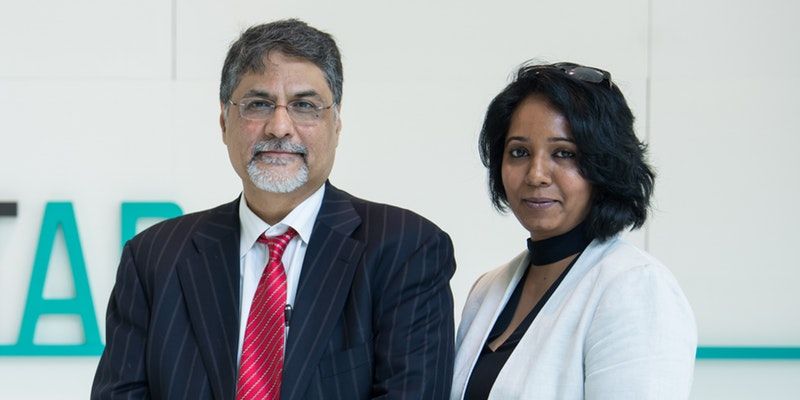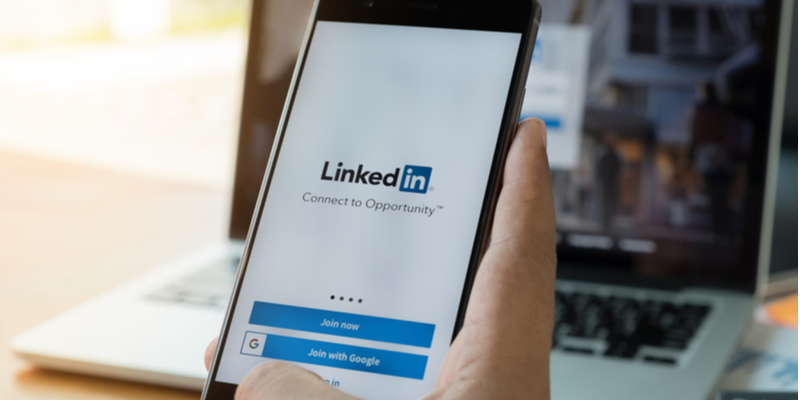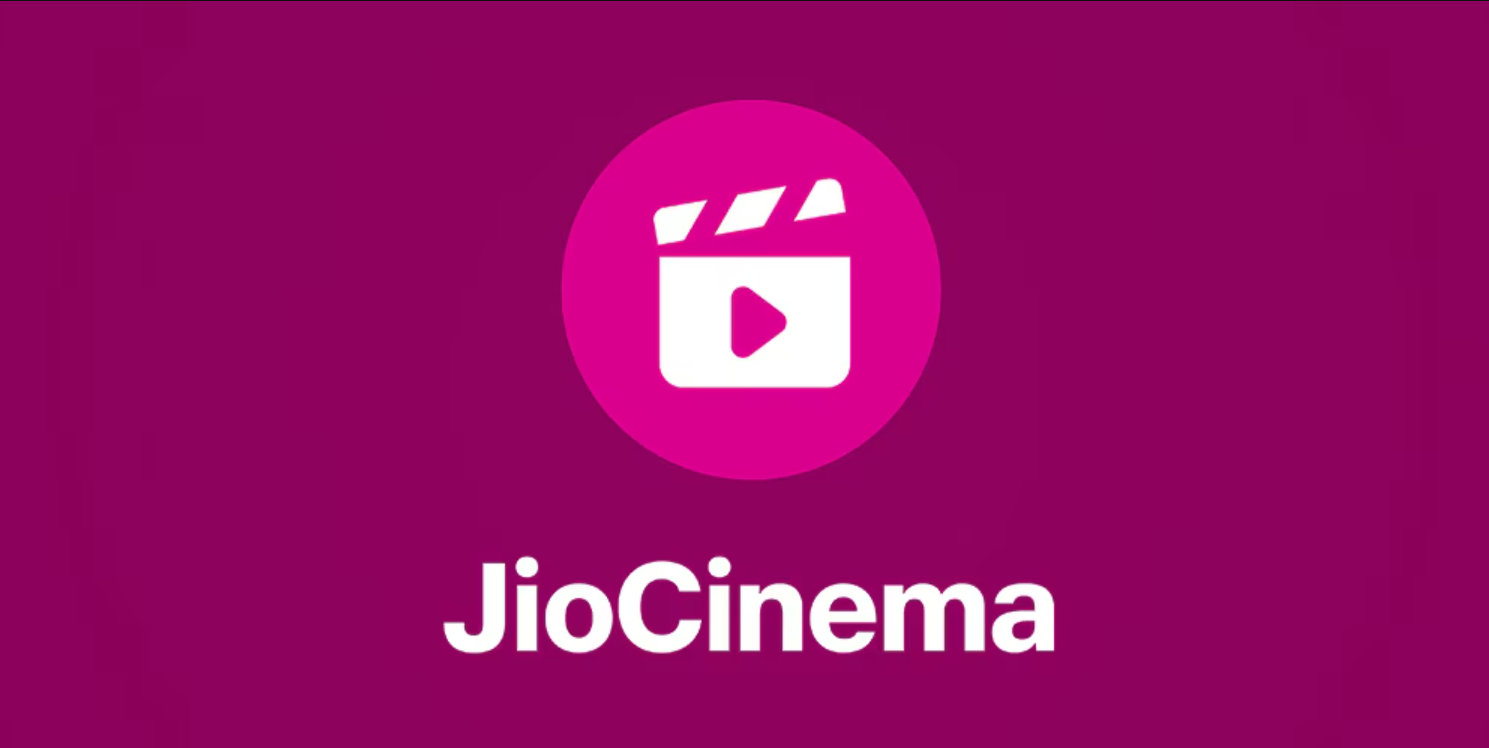Artelus is using AI to save people from going blind. Here's how
Artelus’ technology saves lives by quickly screening for diseases like tuberculosis, breast and lung cancer, and diabetic retinopathy, where early detection makes a world of difference.

(L-R) Artelus founders Pradeep Walia and Rajarajeshwari Kodhandapani.
Rajarajeshwari Kodhandapani has a dream – to screen one million people for diabetic retinopathy (DR) so they can get timely treatment and not risk going blind. She is one of the four co-founders of Artelus, along with tech veterans Vish Durga, Lalit Pant, and Pradeep Walia, who is also a serial entrepreneur. As a former business analyst, she never thought she would become an entrepreneur (though she did want to become a politician at one time). Now, she is part of Artelus, a company that builds advanced screening tools to allow doctors and hospitals to diagnose a greater number of patients in the same time for a variety of diseases.
Today, she wants to reach the people they call the "forgotten billion" – those in rural areas who cannot afford healthcare. These are people who don’t have access to hospitals, or even functional primary health centres. Nor can they afford private healthcare. But the bigger problem is a lack of awareness about DR.
India is already considered the world’s diabetes capital, and the World health Organisation (WHO) estimates that nearly 9 percent of the population in the age group of 20 to 70 years suffers from Type II diabetes. And 18 percent of this segment suffers from DR. Only a handful undergo regular eye checkups, so a large majority remain unaddressed, which makes the condition worse.
“A large percentage of people we diagnose with DR don’t even know they are diabetic. And if they have DR, they’ve had diabetes for at least five years,” explains Rajarajeshwari, aka Raji.
The problem is also one of scale. With just over 18,000 ophthalmologists for the 73 million diabetics in India, a per an International Diabetes Federation report, it seems almost impossible for someone with DR to even get time with a doctor. Raji sums up the situation when she says,
“Early diagnosis is the only way to save 73 million diabetic patients in India from marching towards blindness.”
Tackling the very preventable diabetic retinopathy
While Artelus is building products to diagnose a number of diseases, it currently focused on tackling DR in two ways. One, it plans to use DRISTi, its deep learning-based AI-powered algorithm that reads digital images to detect and identify early signs of DR during a simple eye check-up – just like an opthamologist would do – without a hospital setup.
“Anyone, even one with no technical or medical background, can learn to use DRISTi,” says Raji, adding, “NGO and healthcare workers can use this with minimal training of less than two hours.”
Next, it wants to take away the load of diagnosing DR from doctors by bringing patients in only when DRISTi confirms the condition. “This leaves doctors free to use their time for treatments where their specialisation is required the most,” she explains.
The solution is simple to use. First, an operator takes the basic details of the patient. Next, they capture an image of the patient’s retina using an autofocus camera. The most critical part, that of the doctor reviewing this image for a diagnosis, is done by the AI-powered algorithm. Once an image is captured, it prints out a report which flags cases where symptoms of DR are evident.
“The whole process is completed in under five minutes per patient,” says Raji.
The camera needs a basic power source and dim lighting. The solution works offline as well, and doesn’t need an internet connection to screen and diagnose patients. It also has a platform where doctors can view those diagnosed with the condition and recommend treatment as soon as the device connects to the internet.

DRISTi at work
Another advantage is that it doesn’t have to be used in an eye hospital or screening camp. It can be used in other setups - at the offices of general practitioners, diagnostics labs, etc.
According to Artelus, it can also be used in remote villages and areas where there is no access to healthcare facilities, and poor internet connectivity.
“Our AI-powered solution is enabling potentially any non-specialist to be able to use our system and screen for DR, other retinal diseases such as glaucoma, choroidal neovascularisation (CNV), and diabetic macular edema (DME), using retinal and OCT images,” Raji explains.
Further, this AI solution can be integrated with any fundus camera (a camera that can take a picture of the back of the eye). Most fundus camera makers, including a low-cost one from Bengaluru-based healthcare startup Forus Health, have portable devices that can be easily carried for screening.
Also read: Janitri’s portable smart device monitors mother and baby to keep them safe through childbirth
Taking DRISTi to the masses
DRISTi has been commercially available since 2016 and is being used in 50 centres across the country. In India, it obtained the CE mark in June 2018 and is available for sale in Europe as well as Asia.
“We begin to plan commercial implementations in the UK, the Middle East, Malaysia, and Australia by June 2019,” she says.
The team is also working on getting US FDA approval, and on releasing a version that can detect other eye diseases using retinal images. For the past three years, Artelus has been chosen by the American Academy of Ophthalmology for poster status on their studies.
“We have tested our solutions in multiple validations. The most recent one was with the Dubai Health Authority in the Dubai Diabetes Hospital where our models were measured against a retinal specialist’s ground truth. Our solution performed at 96 percent sensitivity against a retinal specialist.”
Artelus has been organising screening camps in partnership with a charitable eye hospital in Kolkata and this year it plans to expand the screening camps to interior West Bengal, Karnataka and several states in the Northeast.
What comes next?
According to the founders, the AI-enabled chips have the potential to be used in handheld devices or smart devices, making it possible for millions of Indians to have better access to disease screening for timely healthcare.
Artelus is exploring options to leverage government infrastructure, including Ayushman Bharat, to reach every village in the country. It is keen to partner with NGOs to train them to screen for DR using a hand-held device at a nominal cost. It also wants to set up screening camps sponsored by large organisations to screen the people that can’t afford DR screening in a clinical set-up.
A recent report by PwC said India’s medical technology sector was set to touch $9.6 billion by 2022 from $5.7 billion in 2017. The sector is allowed 100 percent foreign direct investment through the automatic route. According to the report, factors such as the Make-in-India initiative, government-industry collaboration on device rules and standardisation, as well as new funding from the government to improve R&D and testing infrastructure will contribute to the sector’s growth.
Artelus, in the meantime, is already set to launch its next set of screening products for glaucoma, tuberculosis, pneumonia from chest x-rays, breast cancer from mammograms, and multiple sclerosis, all of which are in various stages of validation and field trials.
As the founders put it, “India has been a testimony to our belief, ‘never provide poor solutions to poor people - they are smart’, and this resonates with our vision to take healthcare to the people that need it the most.”
Also read: Meet 5 Indian startups you didn’t know were working on making cancer easier to diagnose











